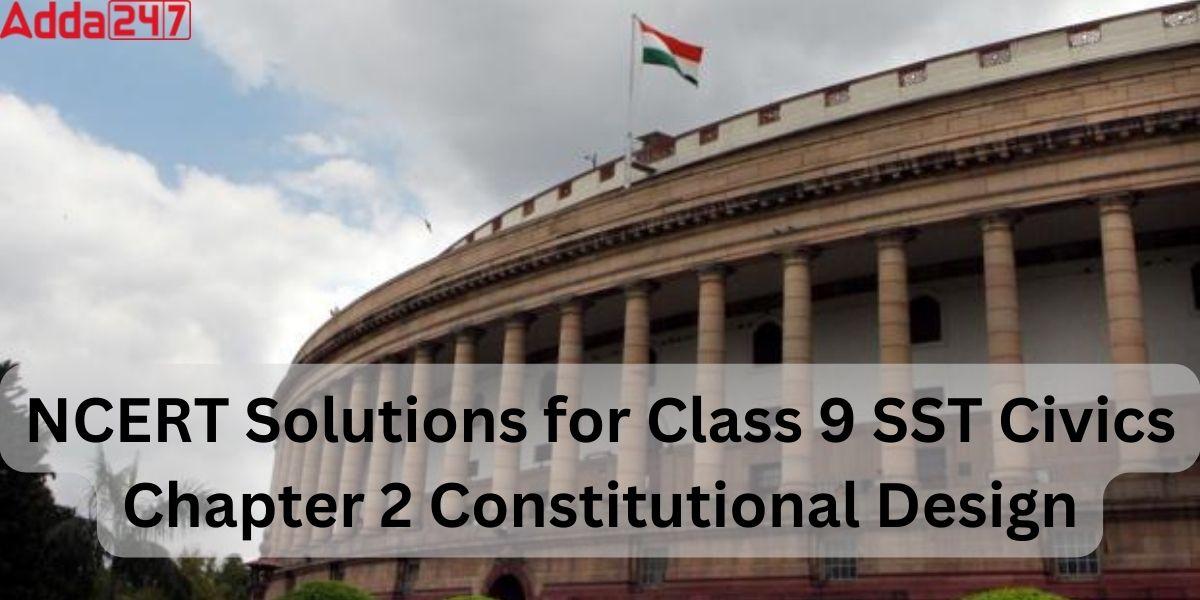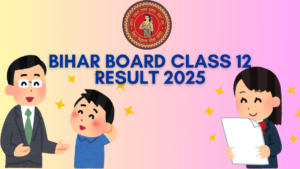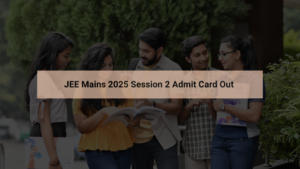Table of Contents
NCERT Solutions Class 9 SST Civics Chapter 2 Constitutional Design
NCERT Solutions for Class 9 SST Civics Chapter 2 Constitutional Design notes are provided in this article. NCERT Solutions for class 9 is the finest resource for getting a high score on the class 9 Examination. Adda247 Expert faculty team prepared NCERT Solutions for Class 9 SST Civics Chapter 2 Constitutional Design exercises of that chapter for a better grasp of the topics. These NCERT Solutions answer all questions in an easy and simple manner. These solutions will help you understand the concepts covered in the chapter completely. By writing these answers in the exam students will undoubtedly be able to achieve high scores. Keep learning with Adda247
NCERT Solutions for Class 9 SST Civics Chapter 2 Constitutional Design pdf
NCERT Solutions for Class 9 SST Civics Chapter 2 Constitutional Design- Pdf is given in pdf format so students can easily download it for future use. Click here to download NCERT Solutions for Class 9 SST Civics Chapter 2 Constitutional Design
Class 9 SST Civics Chapter 2 Constitutional Design Video Explanation
Class 9 SST Civics Chapter 2 Constitutional Design Summary
Class 9 SST Civics Chapter 2 Constitutional Design introduces the fundamentals of and importance of the Indian Constitution. Students will get knowledge of the significance of the Indian Constitution to our democracy and a thorough examination of the constitution of South Africa. Let’s take a review of the topics and subtopics which are included in the Chapter 2 Constitutional Design
1. Democratic Constitution in South Africa
- Towards a new constitution
2. Why Do We Need a Constitution?
3. Making Of the Indian Constitution
- The Path to the Constitution
- The Constituent Assembly
4. Guiding Values of the Indian Constitution
- The Dream and the Promise
- Philosophy of the Constitution
- Institutional design
NCERT Solutions for Class 9 SST Civics Chapter 2 Constitutional Design Questions with Answers
1. Here are some false statements. Identify the mistake in each case and rewrite these correctly based on what you have read in this chapter.
- Leaders of the freedom movement had an open mind about whether the country should be democratic or not after independence.
- Members of the Constituent Assembly of India held the same views on all provisions of the Constitution.
- A country that has a constitution must be a democracy.
- Constitution cannot be amended because it is the supreme law of a country.
Answer.
- Leaders of the freedom movement had a consensus that after independence, India will be a democratic nation.
- Members of the constituent assembly of India held the same views on the basic principles of the Constitution.
- A country that is a democratic country must have a Constitution.
- A Constitution can be amended with time and the needs of the citizens.
2. Which of these was the most salient underlying conflict in the making of a democratic constitution in South Africa?
- Between South Africa and its neighbours
- Between men and women
- Between the white majority and the black minority
- Between the coloured minority and the black majority
Answer. 4. Between the coloured minority and the black majority
3. Which of these is a provision that a democratic constitution does not have?
- Powers of the head of the state
- Name of the head of the state
- Powers of the legislature
- Name of the country
Answer. B. Name of the head of the state
4. Match the following leaders with their roles in the making of the Constitution:
| Motilal Nehru | President of the Constituent Assembly |
| B.R. Ambedkar | Member of the Constituent Assembly |
| Rajendra Prasad | Chairman of the Drafting Committee |
| Sarojini Naidu | Prepared a Constitution for India in 1928 |
Answer.
| Motilal Nehru | Prepared a Constitution for India in 1928 |
| B.R. Ambedkar | Chairman of the Drafting Committee |
| Rajendra Prasad | President of the Constituent Assembly |
| Sarojini Naidu | Member of the Constituent Assembly |
5. Read again the extracts from Nehru’s speech ‘Tryst with Destiny’ and answer the following:
1. Why did Nehru use the expression “not wholly or in full measure” in the first sentence?
Answer: Nehru chose the phrase “not wholly or in full measure” in the first sentence of his speech, “Tryst with Destiny,” because he believed it would be impossible to fulfil all of the pledges at once throughout nation-building. He, therefore, desired the process of constructing a nation to be gradual.
2. What pledge did he want the makers of the Indian Constitution to take?
Answer: Nehru wanted makers of the Indian constitution to take a pledge to serve both India and her people as well as the greater good of humanity.
3. “The ambition of the greatest man of our generation has been to wipe every tear from every eye”. Who was he referring to?
Answer. In the above expression, Nehru was referring to Mahatma Gandhi, the father of our country,
6. Here are some of the guiding values of the Constitution and its meaning. Rewrite them by matching them correctly.
| Sovereign | The government will not favour any religion |
| Republic | People have the supreme right to make decisions |
| Fraternity | Head of the state is an elected person |
| Secular | People should live like brothers and sisters |
Answer.
| Sovereign | People have the supreme right to make decisions |
| Republic | Head of the state is an elected person |
| Fraternity | People should live like brothers and sisters |
| Secular | The government will not favour any religion |
7. How did your school celebrate Constitution Day on November 26th? Prepare a brief report.
Answer.Self-explanatory.Students should make their report in own words.
8. Here are different opinions about what made India a democracy. How much importance would you give to each of these factors?
1. Democracy in India is a gift of the British rulers. We received training to work with representative legislative institutions under the British rule.
Answer: India’s democracy is not a gift from the British rulers. To achieve freedom, Indians had to fight and make the ultimate sacrifice. It is true to say that British experience encouraged the creation of institutions in independent India.
2. Freedom Struggle challenged the colonial exploitation and denial of different freedoms to Indians. Free India could not be anything but democratic.
Answer: Yes, the freedom struggle challenged colonial exploitation, but also supported democracy by allowing for consensus-based lawmaking rather than imposing its will on others. Indians through a lot of suffering during British rule, which led them to recognize that their country needed to become democratic in order for the people to have a voice in how it was run.
3. We were lucky to have leaders who had democratic convictions. The denial of democracy in several other newly independent countries shows the important role of these leaders.
Answer. After independence, India became a democratic nation due to the actions and decisions of our leaders. With strategies like “Satyagraha” and “Ahimsa,” India’s freedom struggle is the only instance of a bloodless freedom struggle in history. These battles were fought to free India from British rule and grant Indians the freedom they deserved.
9. Read the following extract from a conduct book for ‘married women’, published in 1912. ‘God has made the female species delicate and fragile both physically and emotionally, pitiably incapable of self-defence. They are destined thus by God to remain in male protection – of father, husband and son – all their lives. Women should, therefore, not despair, but feel obliged that they can dedicate themselves to the service of men’. Do you think the values expressed in this para reflected the values underlying our constitution? Or does this go against constitutional values?
Answer. It violates constitutional principles since the ideas represented in the previous paragraph are wholly at odds with the values behind our constitutions. It shows discrimination based on gender. Regardless of gender, caste, sex, location of birth, or religion, every person of our country is guaranteed fundamental rights under our constitution.
10. Read the following statements about a constitution. Give reasons why each of these is true or not true.
- The authority of the rules of the constitution is the same as that of any other law.
- Constitution lays down how different organs of the government will be formed.
- Rights of citizens and limits on the power of the government are laid down in the constitution.
- A constitution is about institutions, not about values
Answer.
- Not True. The supreme law is the constitution. It explains how the government is chosen, their authority, and the protection of the people. Unlike any other law, this one is completely unique. A regular law is passed by the Parliament and is subject to change at any time. On the other hand, the Parliament is required to follow the Constitution’s laws, which have higher jurisdiction.
- True. The Constitution has established the guidelines for establishing governments. The Constitution specifies the functions of the legislative, executive, and judicial branches, as well as how and by whom they shall be formed.
- True. The Constitution outlines the citizens’ rights as fundamental rights that are protected by the law. The constitutional system addresses citizen rights as well as how to limit governmental authority through various organisations.
- Not True. The institutions must uphold the values laid out in The constitution. The Preamble to the Constitution serves as a very good illustration. Justice, liberty, equality, and fraternity are principles that our preamble states as needing to be promoted. The country’s governance must be founded on socialism and democracy and adhere to secularism.
NCERT Solutions for Class 9 SST Civics Chapter 2 Constitutional Design-FAQs
Q.Why do we need a constitutional design?
People who live in a country together have established laws that they follow. It promotes communication and cooperation between the public and the government. It outlines the nature of a nation’s government and how it ought to operate. It establishes restrictions on the government’s authority.
Q.How can I access the online PDF version of the NCERT Solutions for Class 9 SST Civics Chapter 2 Constitutional Design?
Ans. The NCERT Solutions for Class 9 SST Civics Class 9 SST Civics Chapter 2 Constitutional Design PDF may be downloaded using the link in the article.
Q. What are the advantages of using Adda247’s NCERT Solutions for Class 9 SST Civics Chapter 2 Constitutional Design?
Ans. The advantages of using NCERT Solutions for Class 9 SST Civics Chapter 2 Constitutional Design from Adda247 include the following:
- The NCERT solution as well as a video explanation
- Additionally, a PDF is included, which can be downloaded and saved for future use



 Bihar Board 12th Result 2025 Out @ inter...
Bihar Board 12th Result 2025 Out @ inter...
 JEE Mains 2025 Session 2 Admit Card Out,...
JEE Mains 2025 Session 2 Admit Card Out,...
 Join ONE-Pro-Max - MAHAPACK for NEET-UG ...
Join ONE-Pro-Max - MAHAPACK for NEET-UG ...









